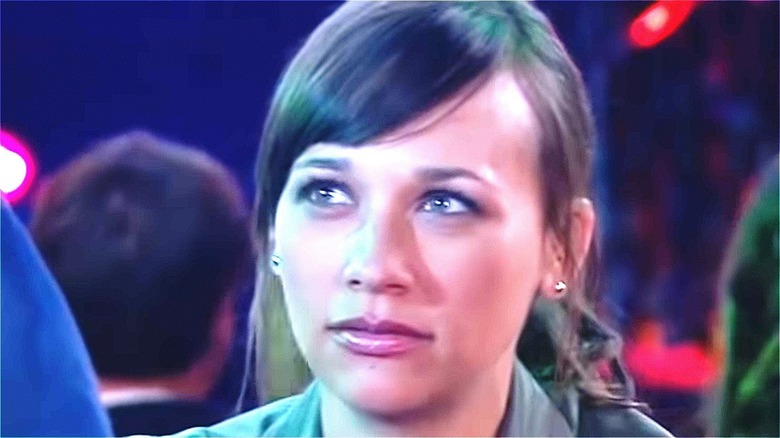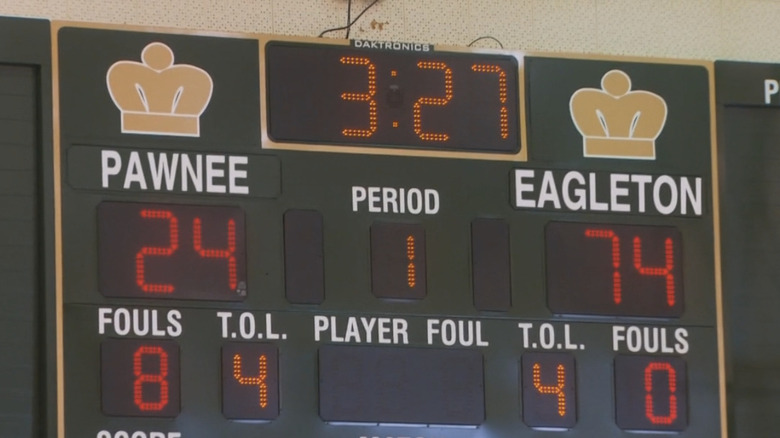The Missing Detail In Parks And Recreation That Still Bothers Fans
Featuring a talented cast, beloved characters, and smart writing, NBC's mockumentary sitcom "Parks and Recreation" quickly captured the hearts of TV viewers. Throughout its seven-season run, the show chronicles the municipal inner workings of the fictional town of Pawnee, Indiana, serving as a political satire as well as a relatable human commentary. Of course, the spotlight is on the antics of the member of the often-dysfunctional Parks and Recreation department, with stars such as an optimistic bureaucrat Leslie Knope (Amy Poehler), her grounded best friend Ann Perkins (Rashida Jones), the mustachioed rugged individual Ron Swanson aka Duke Silver (Nick Offerman), and many other memorable characters.
The characters on "Parks and Recreation" and the town itself are well fleshed-out, so that while viewers understand these characters better and watch them grow, they become more and more invested in the fate of Pawnee. However, there is one unexplained detail regarding the town of Pawnee and its affluent neighboring community that might leave fans scratching their heads.
Parks and Rec fans never get the aftermath of the Pawnee-Eagleton town merger
"Parks and Recreation" fans who've made it deep enough into Season 3 should be familiar with Eagleton, the neighboring town that serves as Pawnee's foil, if the towns themselves were characters. The two towns initially butt heads when Eagleton's own parks department constructs a dividing fence through a park that they share. The apparent economic disparity of the neighbors only fuels their bitter rivalry; where Pawnee often struggles with funding, Eagleton — which Leslie dubs "the land of rich, snobby jerks" — seems to prosper. As such, fans may have found it satisfying when, in Season 6, it turns out that Eagleton is in the process of going bankrupt. Leslie comes up with a noble plan to rescue Eagleton by absorbing it into Pawnee, merging the two towns into one. Of course, many citizens from both towns oppose this plan, so a Unity Concert is held to assuage their concerns and encourage, well, unity.
After the Unity Concert, though, things seem to jump ahead, and it seems like we're left to assume that the merger worked out. What happens in between is never explored or explained. Did one concert just magically make everyone happy?

